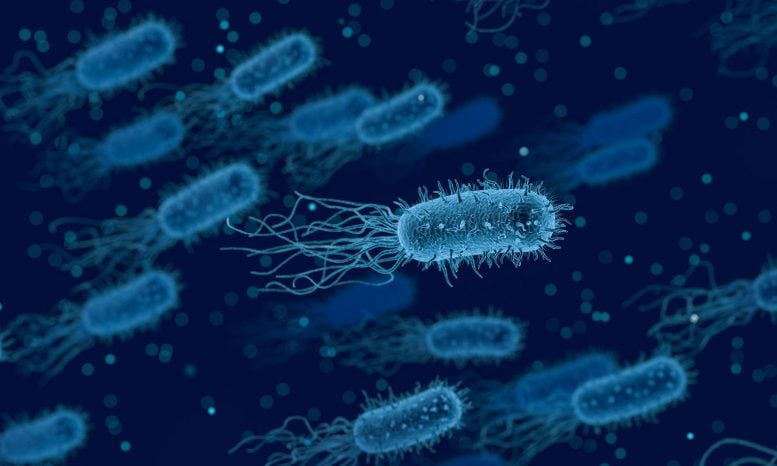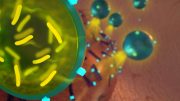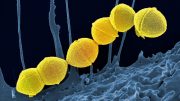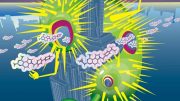
Researchers at the University of Zurich and Spexis have re-engineered the chemical structure of a natural peptide, thanatin, to develop a new class of antibiotics capable of combating resistant bacteria. The synthetic peptides have demonstrated effectiveness, safety, and resistance to bacterial immunity in mice tests, bringing the potential for a new type of antibiotic that can combat resistant strains.
There’s a pressing demand for fresh antibiotics among healthcare experts to combat resistant bacteria. A team of scientists from the University of Zurich and the company Spexis have adapted the chemical structure of naturally found peptides to create antimicrobial substances that attach to new targets in bacterial metabolism.
Each year, over five million people globally succumb to antibiotic-resistant bacteria. The development of new antibiotics is critically necessary to guarantee the successful treatment of bacterial infections in patients.
“Unfortunately, the development pipeline for new antibiotics is fairly empty,” says chemist Oliver Zerbe, head of the NMR facilities at the University of Zurich. “It’s been more than 50 years since the last antibiotics against previously unused target molecules were approved.”
In a study recently published in Science Advances, Zerbe now discusses the development of a highly effective class of antibiotics that fight Gram-negative bacteria in a novel way. The WHO classifies this group of bacteria as extremely dangerous. The group, whose resistance is particularly high due to their double cell membrane, includes carbapenem-resistant enterobacteria, for example. Besides the UZH team, researchers from the pharmaceutical company Spexis AG were also involved in the study as part of a collaboration co-funded by Innosuisse.
Natural peptide chemically optimized
The starting point for the researchers’ study was a naturally occurring peptide called thanatin, which insects use to fend off infections. Thanatin disrupts an important lipopolysaccharide transport bridge between the outer and inner membrane of Gram-negative bacteria, as revealed a few years ago in a study by now-retired UZH professor John Robinson. As a result, these metabolites build up inside the cells, and the bacteria perish. However, thanatin isn’t suitable for use as an antibiotic drug, among other things due to its low effectiveness and because bacteria quickly become resistant to it.
The researchers therefore modified the chemical structure of thanatin to enhance the peptide’s characteristics. “To do this, structural analyses were essential,” says Zerbe. His team synthetically assembled the various components of the bacterial transport bridge and then used nuclear magnetic resonance (NMR) to visualize where and how thanatin binds to and disrupts the transport bridge. Using this information, researchers from Spexis AG planned the chemical modifications that were necessary to boost the peptide’s antibacterial effects. Further mutations were made to increase the molecule’s stability, among other things.
Effective, safe, and immune to resistance
The synthetic peptides were then tested in mice with bacterial infections – and yielded outstanding results. “The novel antibiotics proved very effective, especially for treating lung infections,” says Zerbe. “They are also highly effective against carbapenem-resistant enterobacteria, where most other antibiotics fail.” In addition, the newly developed peptides aren’t toxic or harmful to the kidneys, and they also proved stable in the blood over a longer period – all of which are properties that are required for gaining approval as a drug. However, further preclinical studies are needed before the first tests in humans can begin.
When choosing the most promising peptides for their study, the researchers made sure that they would also be effective against bacteria that have already developed resistance to thanatin. “We’re confident this will significantly slow down the development of antibacterial resistance,” says Zerbe. “We now have the prospect of a new class of antibiotics becoming available that is also effective against resistant bacteria.”
Reference: “Peptidomimetic antibiotics disrupt the lipopolysaccharide transport bridge of drug-resistant Enterobacteriaceae” by Matthias Schuster, Emile Brabet, Kathryn K. Oi, Nicolas Desjonquères, Kerstin Moehle, Karen Le Poupon, Sophie Hell, Stéphane Gable, Virginie Rithié, Séverine Dillinger, Peter Zbinden, Anatol Luther, Claudia Li, Sarah Stiegeler, Carolin D’Arco, Hans Locher, Tobias Remus, Selena DiMaio, Paola Motta, Achim Wach, Françoise Jung, Grégory Upert, Daniel Obrecht, Mohammed Benghezal and Oliver Zerbe, 24 May 2023, Science Advances.
DOI: 10.1126/sciadv.adg3683









Be the first to comment on "Scientists Develop New Class of Antibiotics To Fight Resistant Bacteria"